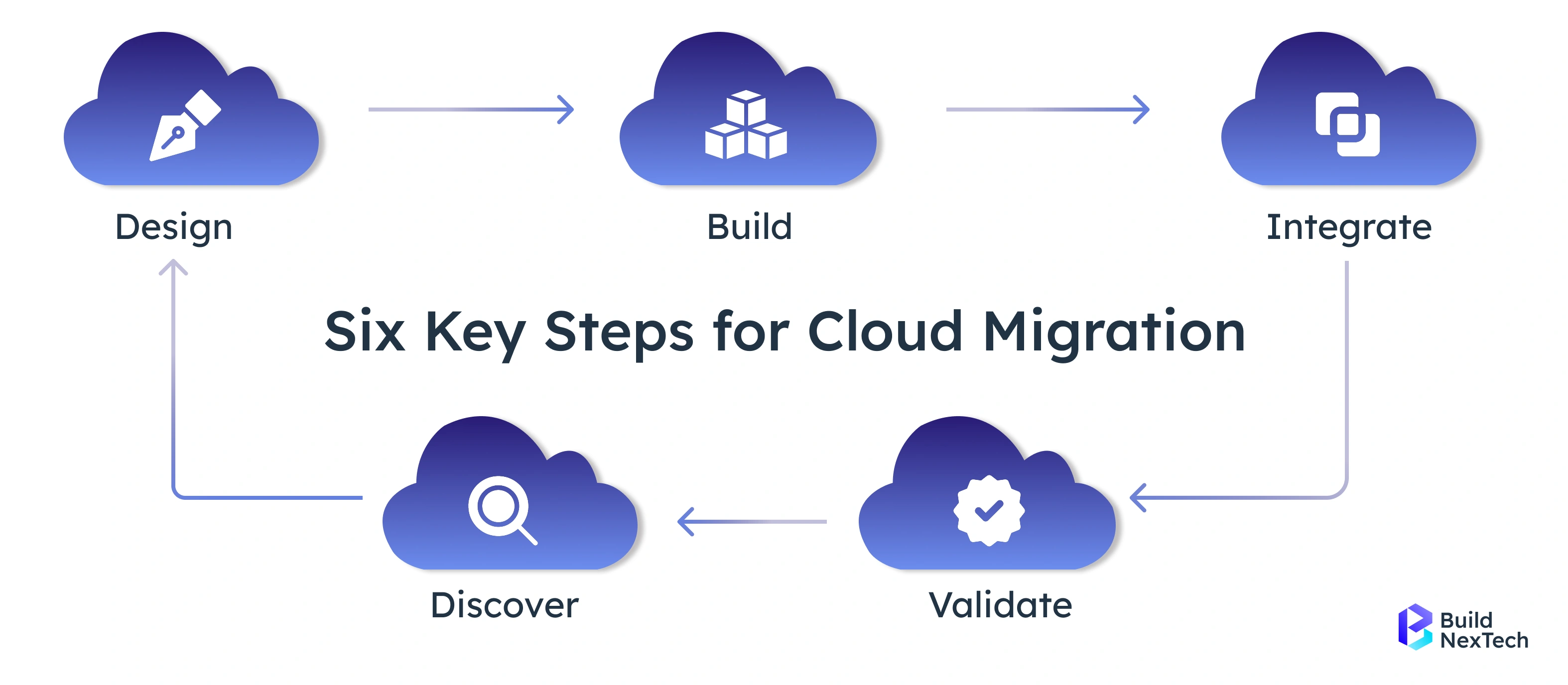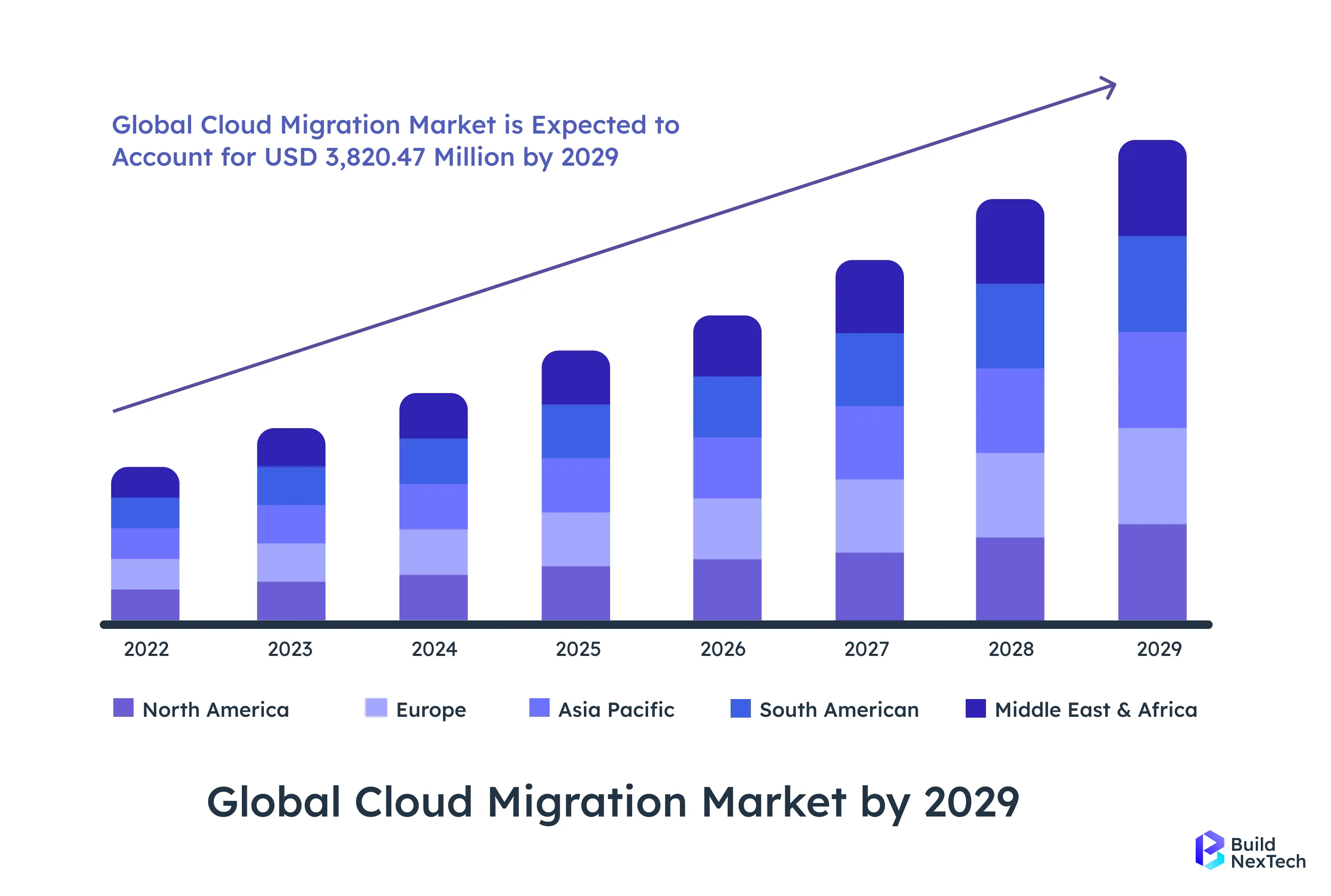Organizations across sectors and sizes are leveraging cloud environments to improve innovation, scalability, and operational efficiency. As compelling as it may appear, there is a significant difference between migrating to the cloud and a smooth migration. A successful migration requires more than moving applications and data. You need to undertake a secure, reliable, and seamless transition solution with the right tools.
By using advanced migration segmentation, organizations ensure their data is protected, regulatory compliance is met, and downtime is limited while automating them through process improvement. Replication in real-time, intelligent monitoring, and bundled security frameworks allow organizations to avoid migration complexities and loss of core capabilities.
The latest capabilities such as analyzing workloads, marking dependencies, orchestrating automated workflows allow IT teams to migrate workloads with deep planning, skills, and maturity. Cloud migration toolkits reduce risk while instilling confidence in decision-making datacenter migration planning while developing enablement for greater depth of capabilities for growth and durability.
💡 Here’s what you’ll take away from this:
📌 What is cloud migration and why it’s a top priority to modern enterprises.
📌 Top cloud migration solutions that keep your workload secure and migration seamless.
📌 Common pitfalls in migrating workloads.
📌 A look into the future and evaluate future trends that answer the question, what will the next generation of cloud migration tools look like.
Understanding Cloud Migration
Cloud migration is the process of moving data, applications, or other business elements from an on-premise infrastructure or data center to a cloud platform. It’s a significant shift that increases efficiency and scalability.
Key types of cloud migration include:
- Data Migration: Transferring data from local servers to the cloud. It requires tools that ensure data integrity and security during the transfer.
- Application Migration: Applications may need to be rehosted (lift-and-shift), re-platformed, or re-architected for the cloud.
- Infrastructure Migration: Moving the entire IT infrastructure, including databases, applications, and network setup, to the cloud.
Cloud migration has become a strategic necessity for businesses to gain a competitive edge. However, it comes with challenges.

Key Features of Effective Cloud Migration Tools
While there are numerous cloud migration service providers in the market, the most useful services will possess similar features:
1. Data Integrity: Ensures that all data remains accurate and complete during migration through checks and validations.
Benefit: Prevents data loss or corruption, keeping critical business information safe.
2. Security: Implements encryption, access controls, and threat monitoring to protect data.
Benefit: Safeguards sensitive information and reduces risk of breaches.
3. Automation: Uses pre-built workflows to move data and configure systems with minimal manual work.
Benefit: Speeds up migration, reduces errors, and frees IT teams for strategic tasks.
4. Compliance: Follows standards like SOC 2 Type II or GDPR, maintaining audit trails and secure handling.
Benefit: Ensures legal and industry requirements are met, protecting the business from penalties.
By focusing on these features, businesses can make the transition more efficient and secure.
Top Cloud Migration Tools in the Market
Several solutions stand out for enabling seamless cloud transitions. Let’s look at four of the most widely used:
Azure Migrate
Overview:
Azure Migrate, developed by Microsoft, is a robust service that simplifies the migration of on-premises servers, databases, and applications to the Azure cloud.
Why it’s secure and reliable:
- End-to-End Assessment: Provides detailed dependency mapping and performance insights before migration.
- Built-in Security: Adheres to Microsoft’s global security framework, ensuring encryption and compliance with ISO, SOC, and GDPR.
- Flexibility: Supports multiple strategies like rehosting, refactoring, and re-architecting.
- Seamless Integration: Works natively with Azure services for minimal downtime.
👉 With its enterprise-grade security and compliance, Azure Migrate ensures data integrity and reliable performance throughout the transition.

CloudEndure (AWS)
Overview:
CloudEndure, an AWS service, specializes in disaster recovery and migration, enabling businesses to move applications and infrastructure into AWS with minimal disruption.
Why it’s secure and reliable:
- Continuous Data Replication: Reduces downtime and risk of data loss.
- Wide Compatibility: Supports physical, virtual, and cloud-based infrastructures.
- Security Compliance: Provides encryption in transit and at rest, aligned with AWS security protocols.
- Disaster Recovery Strength: Ensures business continuity even during migration.
👉 CloudEndure is designed for critical workloads where uptime and data protection are non-negotiable, making it a secure choice for high-stakes migrations.
AWS Migration Hub
Overview:
AWS Migration Hub offers a centralized platform to track and manage migrations across multiple AWS tools and partner solutions.
Why it’s secure and reliable:
- Unified Dashboard: Monitors the progress of servers and applications migrating into AWS.
- Strong Security Integration: Uses AWS Identity and Access Management (IAM), encryption, and compliance frameworks (HIPAA, SOC, ISO).
- Multi-Tool Support: Works with other AWS migration services like Server Migration Service and Database Migration Service.
- Risk Reduction: Gives real-time visibility, helping avoid failures or delays.
👉 By centralizing migration management with AWS’s proven security infrastructure, Migration Hub ensures a controlled, reliable, and safe migration journey.
Real-World Use Case:
A large e-commerce company needed to migrate hundreds of on-premises servers and databases to AWS without disrupting operations. By using AWS Migration Hub, the IT team tracked all workloads from a single dashboard, coordinated multiple migration tools, and ensured compliance with SOC 2 and HIPAA standards. The centralized monitoring allowed them to identify and resolve potential issues in real time, completing the migration ahead of schedule with zero data loss.
Carbonite Migrate
Overview:
Carbonite Migrate (by OpenText) is a trusted solution for moving workloads across physical, virtual, and cloud environments with minimal downtime.
Why it’s secure and reliable:
- Real-Time Replication: Keeps workloads synchronized until cutover, reducing downtime.
- Broad Platform Support: Compatible with Windows, Linux, VMware, and multiple cloud providers.
- Encryption & Security: Protects data during transit with robust encryption.
- Proven Reliability: Long-standing reputation for reliable workload migrations in enterprise environments.
👉 Carbonite Migrate is especially popular for businesses that need flexibility and robust data protection across hybrid IT environments.

Comparative Analysis of Top Cloud Migration Tools: Pros, Cons, and Best Use Cases
Choosing the right cloud migration tool is critical for ensuring a secure, efficient, and seamless transition. Each solution offers unique strengths, limitations, and ideal scenarios. The table below highlights the pros, cons, and best use cases of leading cloud migration tools—Azure Migrate, CloudEndure (AWS), AWS Migration Hub, and Carbonite Migrate—to help organizations select the right fit for their cloud migration strategy.
Common Challenges in Cloud Migration
Migrating to the cloud often presents several hurdles that can impact operational efficiency and data security.
- Data Security: Ensuring security during migration is paramount. Breaches can compromise sensitive data, leading to loss of trust and regulatory penalties.
- Data Volume: Managing large volumes of data requires advanced tools that ensure validation and accuracy.
- Application Dependencies: Identifying and managing dependencies is critical to prevent system failures.
- Compliance Standards: Adhering to various compliance requirements can complicate the migration process.
Understanding these challenges helps businesses create effective migration strategies and choose the right tools.
Solutions to Common Cloud Migration Challenges
1. Data Security:
- Use end-to-end encryption during transfer and storage.
- Implement strong access controls and multi-factor authentication.
- Conduct regular security audits and vulnerability assessments.
Benefit: Protects sensitive data and reduces the risk of breaches.
2. Data Volume:
- Leverage automated migration tools that support bulk data transfer.
- Use data validation and reconciliation processes to ensure integrity.
- Consider phased migration to handle large datasets in manageable chunks.
Benefit: Ensures accurate, complete migration without overwhelming systems.
3. Application Dependencies:
- Map application dependencies before migration using discovery tools.
- Test applications in a staging environment to identify potential conflicts.
- Sequence migrations to maintain operational continuity.
Benefit: Prevents downtime and ensures applications run smoothly post-migration.
4. Compliance Standards:
- Choose cloud providers that adhere to relevant regulations (SOC 2, HIPAA, GDPR).
- Maintain audit logs and generate compliance reports.
- Regularly review policies to align with evolving standards.
Benefit: Avoids legal penalties and ensures safe handling of sensitive data.
Future Trends in Cloud Migration Tools
As cloud technology evolves, migration tools are advancing with new capabilities:
- AI & Machine Learning: Automating and optimizing migration processes for accuracy and efficiency.
- Enhanced Security: Incorporating advanced cybersecurity protocols to tackle sophisticated threats.
- Data Lakes & BI Integration: Leveraging data lakes and business intelligence tools for migration insights and decision-making.
Keeping up with these trends helps businesses make smarter cloud adoption strategies.

Conclusion
Cloud migration has become essential for organizations aiming to scale, innovate, and remain competitive. A successful transition requires the right cloud migration strategy, supported by reliable cloud data migration tools that ensure security, compliance, and minimal downtime.
From AWS cloud migration solutions like CloudEndure and Migration Hub to enterprise-ready options such as Azure Migrate and Carbonite, businesses today have access to the best cloud migration tools for every need. Whether it’s data transfers, application modernization, or cloud to cloud migration tools, the right approach reduces risk and simplifies complexity. At Buildnext Tech, we specialize in delivering tailored cloud migration services, partnering with leading cloud migration companies, and providing expertise in cloud migration planning tools and cloud application migration tools. With us, enterprises can embrace a seamless, secure, and future-ready migration journey with confidence.
People Also Ask
How do these tools ensure minimal downtime during migration?
Modern tools use continuous data replication and real-time synchronization, allowing systems to stay operational while the migration occurs. This ensures a seamless transition with little to no interruption.
Can cloud migration tools handle hybrid or multi-cloud environments?
Yes. Solutions like Carbonite Migrate and CloudEndure support hybrid, physical, and multi-cloud environments, allowing businesses to operate across different infrastructures simultaneously.
How does compliance factor into cloud migration?
Tools like Azure Migrate offer built-in compliance with standards such as ISO, SOC, and GDPR, ensuring that sensitive data meets global security regulations throughout the migration process.
How can businesses choose the right cloud migration tool?
Businesses should assess factors like existing infrastructure, budget, security needs, scalability, and cloud provider preference. For example, Azure Migrate suits Microsoft-heavy environments, while CloudEndure fits AWS users.
What are the long-term benefits of using secure and reliable migration tools?
Secure migration tools enhance data protection, scalability, cost-efficiency, and operational resilience. They also simplify future upgrades, disaster recovery, and compliance management, ensuring a sustainable cloud ecosystem.


























.webp)
.webp)
.webp)

